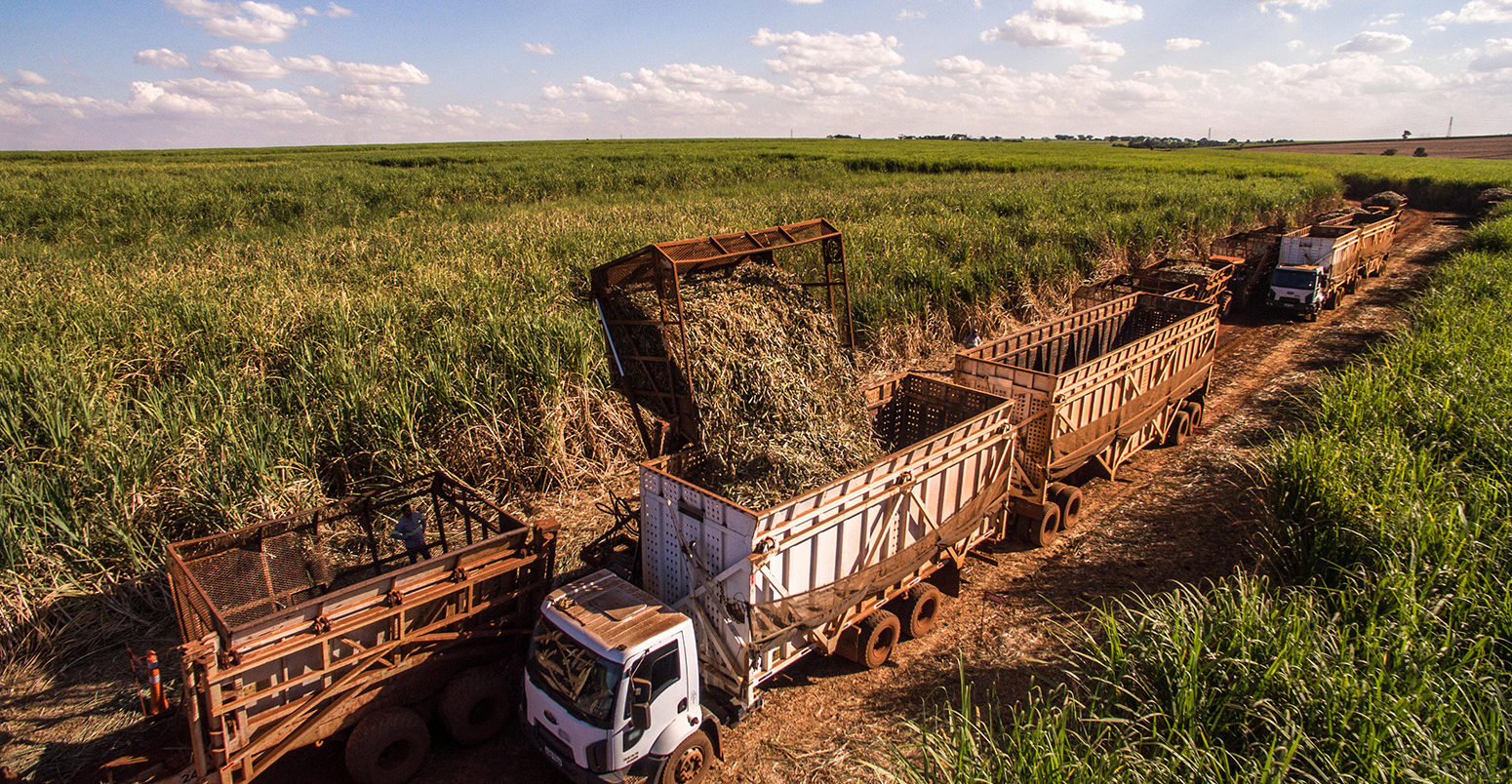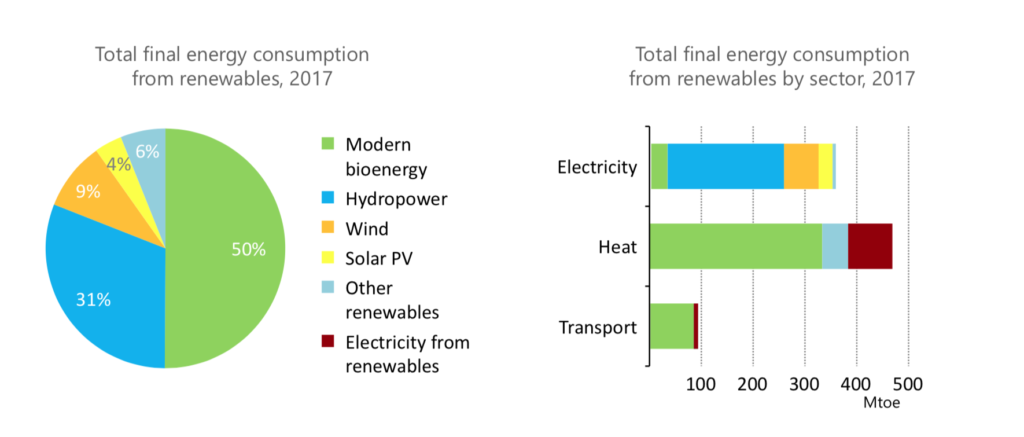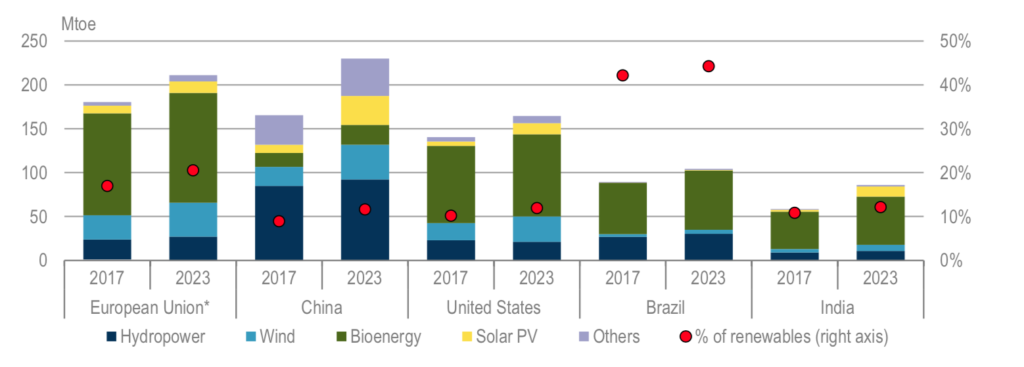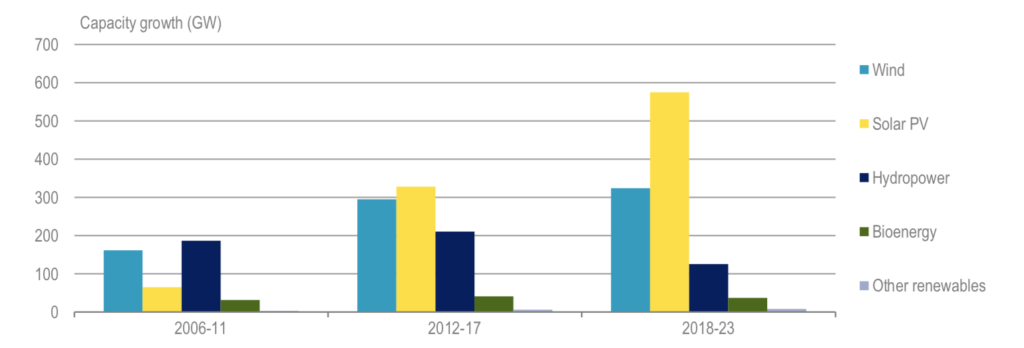
IEA: Bioenergy to lead growth in renewables over next five years
Jocelyn Timperley
10.08.18Jocelyn Timperley
08.10.2018 | 12:00am“Modern” bioenergy will lead the global expansion of renewable energy up to 2023, the International Energy Agency (IEA) says in its latest forecast.
The report, which the IEA releases each year, looks at the current status of renewable energy, projecting its growth for the next five years.
It finds that the global consumption of renewable energy increased by around 5% in 2017. This led the share of renewables in final energy consumption to rise around 0.3 percentage points to 10.4%.
Bioenergy continues to dominate this growth, largely due to its rising use in heat and transport, the IEA says.
When it comes to electricity, however, the growth of solar photovoltaics (PV) overshadows other renewable technologies, with its capacity expanding more than the rest combined in 2017.
Bio-heat
The IEA report this year focuses on “modern” bioenergy, which the IEA calls the “overlooked giant” of renewables. The IEA does not include traditional use of local biomass in this definition of renewable bioenergy, due to its often-discussed environmental and health impacts.
(There is considerable debate around the sustainability of many other sources of bioenergy. The IEA acknowledges this, but argues well-designed policy frameworks can ensure it is sourced sustainably.)
Half of all renewable energy in 2017 came from modern bioenergy, the IEA says, as shown in the pie-chart on the left-hand side below. It is largely due to use for heat in buildings and industry, as shown in the right-hand chart.

Total final energy consumption from renewables in 2017 (left) and broken down by sector (right). Source: IEA Press webinar for Renewables 2018 report.
Heat accounts for 52% of energy consumption globally, which the IEA says makes it a ”key priority” for achieving long-term climate and sustainability goals. Heat (which also encompasses hot water and cooking) is the largest renewables sector in absolute terms, the IEA says.
However, renewables only provided 10% of heat globally in 2017, the report says. Another 13% came from the traditional use of local biomass, while fossil fuels provided the remaining 77%. The IEA expects renewable heat consumption to increase by 20% over the next five years, again dominated by modern bioenergy. However, renewables will still only account for around a third of the growth in global heat demand over this period, it says.
The use of bioenergy in transport (as biofuels) and industry is a large part of the reason Brazil has by far the largest share of renewables in its overall energy mix of any major market, as shown in the chart below. (Brazil’s large hydropower capacity is also a significant contributor.)

Renewable energy consumption in major markets in 2017 and projections for 2023 for five major markets (left axis/ bars) and proportion of renewables in the overall energy mix (right axis/red dots). Source: IEA Renewables 2018.
The left axis and bars show renewable energy consumption in five major markets in 2017, as well as the IEA’s forecasts for 2023. The right axis and red dots show the proportion of renewables in the overall energy mix, which currently sits at around 42% for Brazil.
Despite high use in some countries, biofuels will still encompass less than 4% of total transport energy demand in 2023, the IEA says.
But this will still be nine times higher than the use of renewable electricity in transport, it says. Renewable electricity in transport is set to expand by two-thirds from 2018 levels in the IEA forecast, driven by an expansion of electric vehicles (EVs) – but from a low base.
The IEA also highlights cement and aviation as key industries where bioenergy could lower emissions. However, the use of aviation biofuels is expected to remain constrained in the absence of cost decreases or stronger policy support, it adds.
Solar dominance
Last year, the IEA found that new solar capacity additions in 2016 reached 74GW globally, an increase of almost 50% on the capacity installed in 2015.
This year’s report shows the rate of solar capacity expansion rose again in 2017, with an extra 97 gigawatts (GW) installed. More than half of this was in China. Total renewable capacity additions reached 178GW, accounting for more than two-thirds of the growth in global net electricity capacity for the first time, says the IEA.
The chart below is the IEA’s breakdown of renewable capacity growth over the two five-year periods (left) and its projections for the next five years (right). As the chart shows, IEA expects solar PV to continue to dominate renewable growth up to 2023, with its capacity increasing by approximately 570GW – around twice Japan’s current total capacity.

Renewable capacity additions by technology in the five year periods from 2006 to 2011 and from 2012 to 2017, and IEA “main case” scenario projected additions from 2018 to 2023. Source: IEA Renewables 2018.
This will lead the total installed solar PV capacity to more than double to 972GW by 2023, the report finds, nearing the symbolic milestone of 1 terawatt (TW) – equal to 1,000GW – capacity within the next five years. Current global capacity sits at around 6TW.
However, hydropower will still remain the largest renewable electricity source by 2023, with 1.4TW installed, up from 1.3TW in 2017. Wind capacity, dominated by onshore wind, will increase by almost two-thirds to 840GW, while bioenergy use in electricity will increase by a quarter to around 160GW.
Overall, renewables will account for 70% of global electricity capacity expansion in the next five years, the IEA says. Around two-fifths of this expansion will occur in China alone, it says.
Underestimate
Carbon Brief has previously written about the IEA’s underestimation of renewables expansion. This continues to be an issue this year, too.
For example, as the chart below shows, projected capacity growth for 2017 range from 116GW to 138GW – well below the 178GW actually seen.
IEA forecasts of annual renewable energy capacity additions versus actual growth. Source: Carbon Brief analysis of IEA Medium Term Renewable Market Reports 2013-2018. Chart by Carbon Brief using Highcharts.The chart also shows the IEA’s tendency in recent years to increase, at a later date, its renewable forecasts for a given year. This year’s report was no exception: for example, its forecast for global renewable capacity growth in 2022 is now given as 190GW, up from 151GW in last year’s report.
The IEA does also present an “accelerated case” in its report, where more supportive government measures lead to 25% higher expansion of renewables in electricity and transport.
-
IEA: Bioenergy to lead growth in renewables over next five years
-
Four charts show how IEA thinks bioenergy will lead renewables growth

